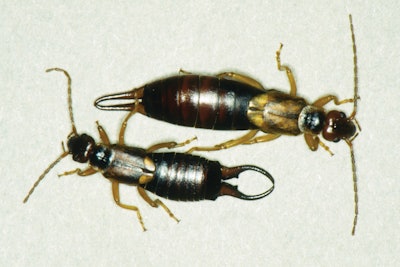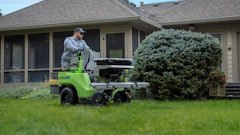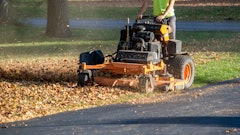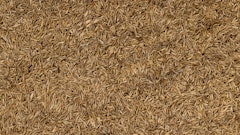
Despite their name, earwigs don’t actually seek out human ears. A nice, cool mulch-covered landscape bed is more to their liking.
When the weather turns hot and dry, earwigs head for the coolest spots they can find, often under the mulch in the landscape beds just outside your customers’ front doors.
Readily recognized by a pair of prominent appendages resembling forceps at the tail end of their bodies, earwigs feed most actively at night on insects and plants. Adult earwigs are about 3/4- inch long and reddish brown.
While some earwig species have functional wings, most are not strong fliers and disperse primarily by crawling. Female earwigs dig cells in the ground where they lay masses of 30 or more eggs. Generally there is one generation a year, but females may produce several broods if the weather permits.
Lawn and landscape professionals can control earwigs with Talstar XTRA granular insecticide as a perimeter treatment. Apply at the rate of 2.3 lbs. product per 1000 sq. ft.
Tom Rasberry, a Texas pest management professional, tried Talstar XTRA for earwig control during last year’s hot, dry summer. “It gave us a very quick kill and showed some impressive results,” notes Rasberry. “My technicians were amazed at how fast it worked. Within minutes, the earwigs were boiling up and dying.”
When earwigs are found in mulch, mix granules into the mulch layer. Place a three-to- six-foot band of Talstar XTRA around the building as a perimeter treatment to stop or limit earwigs from getting indoors.
To reduce earwig infestations, homeowners should eliminate damp, moist conditions in crawl spaces under houses, around exterior water spigots, air-conditioning units and along house foundations. In addition, reduce lighting around doors, windows and other potential entry sites.



















